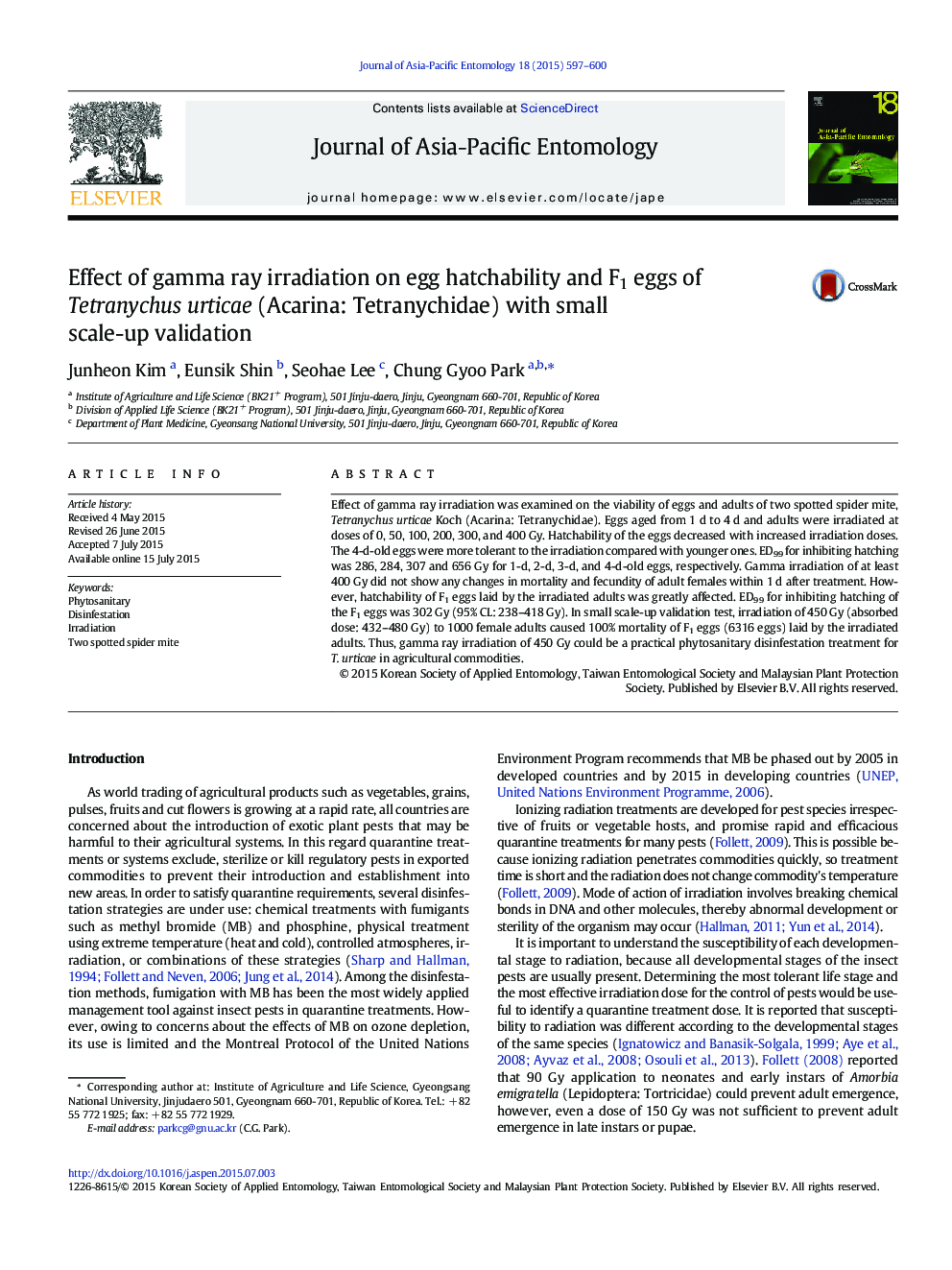| Article ID | Journal | Published Year | Pages | File Type |
|---|---|---|---|---|
| 4524656 | Journal of Asia-Pacific Entomology | 2015 | 4 Pages |
•Hatchability of eggs significantly decreased by increasing doses of gamma ray•Eggs aged 4 d was the most tolerant to gamma radiation.•F1 egg hatchability of the irradiated adults decreased with increasing gamma ray dose•Hatchability of the F1 eggs was prevented by 450 Gy gamma ray in small scale-up test
Effect of gamma ray irradiation was examined on the viability of eggs and adults of two spotted spider mite, Tetranychus urticae Koch (Acarina: Tetranychidae). Eggs aged from 1 d to 4 d and adults were irradiated at doses of 0, 50, 100, 200, 300, and 400 Gy. Hatchability of the eggs decreased with increased irradiation doses. The 4-d-old eggs were more tolerant to the irradiation compared with younger ones. ED99 for inhibiting hatching was 286, 284, 307 and 656 Gy for 1-d, 2-d, 3-d, and 4-d-old eggs, respectively. Gamma irradiation of at least 400 Gy did not show any changes in mortality and fecundity of adult females within 1 d after treatment. However, hatchability of F1 eggs laid by the irradiated adults was greatly affected. ED99 for inhibiting hatching of the F1 eggs was 302 Gy (95% CL: 238–418 Gy). In small scale-up validation test, irradiation of 450 Gy (absorbed dose: 432–480 Gy) to 1000 female adults caused 100% mortality of F1 eggs (6316 eggs) laid by the irradiated adults. Thus, gamma ray irradiation of 450 Gy could be a practical phytosanitary disinfestation treatment for T. urticae in agricultural commodities.
Graphical abstractFigure optionsDownload full-size imageDownload as PowerPoint slide
